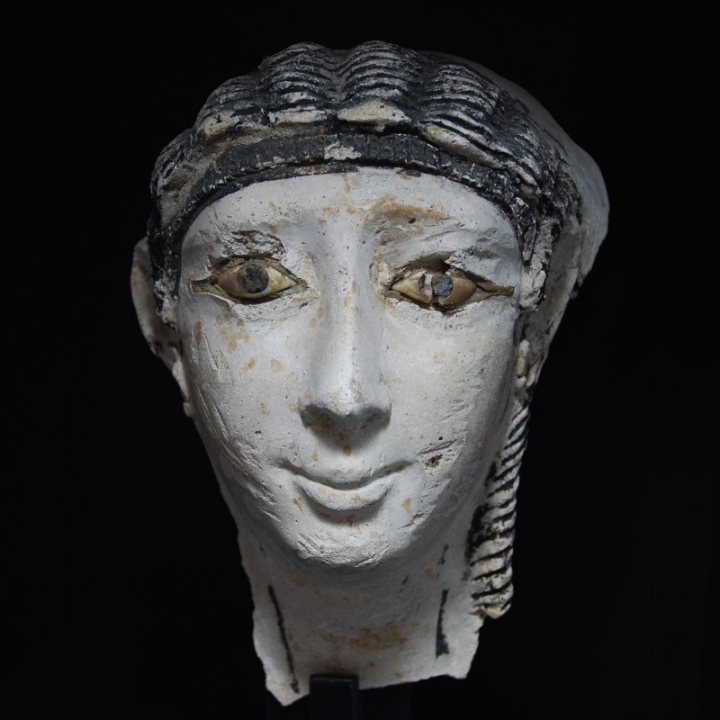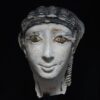Mummy Mask of a Woman
Culture: Egyptian
Period: Roman Times, 1st-2nd century A.D.
Material: Stucco, Glass, Bronze
Dimensions: 27 cm high
Price: 10 000 Euro
Ref: 1046
Provenance: From the Jean-André Périchon collection (1860-1929), acquired before 1903 in Cairo.
Condition: Some wear as seen on the photo, the left eye cracked. The back – common to masks like this – concave.
Description: Attributed to the last phase of the Egyptian culture are the Roman-Egyptian mixed-style created mummy masks made of stucco (plaster). Our model impresses with its realistic expression and its original eyes of glass paste and the frame in bronze. Furthermore, the painting, especially of the wavy hair, sideway curls and the ribbon, is excellently preserved. The face, nose and mouth are probably based on the deceased’s. The flat ears with ear jewellery.
About the history: After the conquest of Egypt by the Romans (30 B.C.), the tradition of the ancient Egyptian religious practices remained, for example the mummification of the deceased and the head being worked out. Whereas in Fayum and Lower Egypt the so called mummy portraits, panel paintings of the deceased, replaced the cardboard masks, sculptural masks of stucco remained in use in Middle Egypt. Around 1 200 stucco masks from the Roman imperial period are known today. The masks were produced in series and afterwards diligently worked out. Special attention was paid to the parts of the anatomically formed and painted eyes. Since Hadrian’s time the eyes were furnished with transparent, cut into form glass flakes or were formed with glass paste – like on our model. Mounted.




